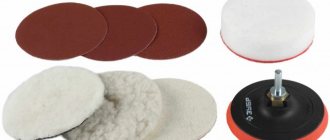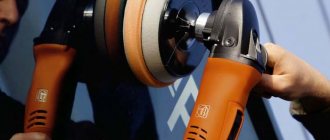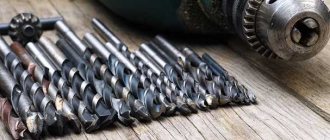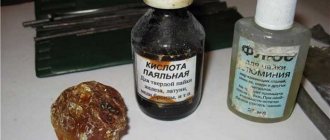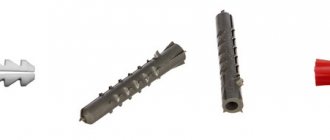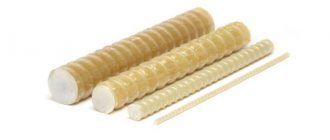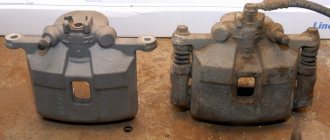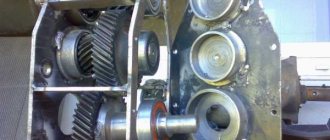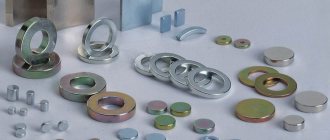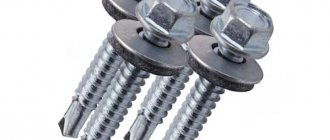The appearance of a car often worries owners no less than its technical condition, which is why many people polish the body regularly. This not only allows you to give the car a presentable look, but also protects the paint layer from premature destruction. Properly selected drill attachments for car polishing will allow you to complete the work as accurately as possible, ultimately obtaining an excellent result.
Assortment of attachments
The most common products for processing automobile bodies are: sponge-like, abrasive with varying degrees of grain, felt, having a soft surface. They are conventionally classified according to the type of production into two types:
- petal (has high productivity and high price);
- surface grinding (made like a rubber disc with an additional coating for processing).
The material for these items is dense foam rubber or felt, which has different diameters. However, kits are sold that consist of several elements that have different purposes and manufacturing complexity.
Making your own nozzles
If there is no suitable option on sale, then for a disk with a high level of rigidity you can make a soft layer of great thickness and place it between Velcro and a plastic base. Using a utility knife, you need to cut off the Velcro where the soft layer will be glued. For the soft layer, a bath sponge is mainly used. It must be remembered that individual elements can shift, breaking the overall symmetry.
You can also use a felt disc, which is used in a polishing machine and machine. First, you should make a pin with a suitable diametrical size and apply a thread on one side. On this side you need to secure the disk, which is surrounded on both sides by a wide nut and a limit washer. This device is not difficult to manufacture and can be used to process various surfaces.
Advantages and disadvantages of sanding attachments
Despite the abundance of solutions, such devices are still auxiliary and are not suitable for solving specific problems. One of the main drawbacks is the weight of the drill. It is difficult to hold a heavy instrument with outstretched arms or above your head. Because of this, the quality of surface treatment and the duration of the procedure suffer.
But where high precision is not required, such as stripping materials or peeling walls, this point is not critical. In a word, a grinding attachment for a drill is a household device that does not pretend to be of a professional level.
A clear advantage of a tandem of a drill and an attachment is its low cost and accessibility. By spending a few hundred rubles, you can get a return that is more than adequate for your household needs. Whereas buying professional equipment will cost a pretty penny. And it is not a fact that the tool will be needed after the necessary work has been carried out.
Application nuances
A drill attachment for car polishing can be purchased at any store that sells car products. However, you should choose these devices carefully.
Body elements of new cars are made using modern technologies. An anti-corrosion compound and paint are applied to the metal, which are wear-resistant. They will last approximately 15 years. However, this coating is better preserved if it is properly cared for. The polishing device restores the original shine and removes defects from the surface. Together with a special product, such a product will cost less than services provided in a workshop.
Tips for choosing
In a good half of cases, grinding attachments are sold under the brand name of electrical equipment manufacturers. It's good if both devices are of the same brand. Then there shouldn't be any compatibility problems.
It is better to look towards well-known brands. They care about quality due to high competition in the market. Although products from no-name manufacturers are much cheaper, the chance of running into a mediocre product in this case is much higher.
Popular manufacturers:
- "Bosch"
- "Makita";
- Dremel
- "Bison";
- "Matrix";
- Fit;
- "Enkor";
- Verto.
It makes more sense to overpay for quality than to constantly buy waste grinding attachments that wear off after several uses.
Body polishing
The polishing process can correct only some defects. If there is corrosion, chips or damage on the body through which the steel frame is visible, then a major repair will be required.
Before starting the polishing process, you should carefully inspect the vehicle to ensure that any imperfections can be eliminated.
Treatment of the body with a special device will give a positive result if:
- slight difference in shades that resulted after partial coloring;
- the presence of roughness, scratches and cloudy stains;
- faded layer of paint;
- the appearance of graininess and streaks of enamel.
You need to know that you can’t overuse polishing, because when you do it, the paint layer becomes smaller by 5 micrometers. From the date of manufacture of the vehicle, no more than 20 polishing procedures can be performed. At this time, you need to use a thickness gauge, especially if the car is used.
How to make car headlights more transparent
If the plastic has darkened in places, become cloudy and dull, it is first recommended to conduct a full inspection of the headlight. Determining the degree of contamination and the level of damage will help determine the nature and scope of restoration work.
Do-it-yourself headlight polishing
If the plastic is not damaged, but the car is very dirty, washing with a special substance for washing glass will be enough. For minor damage, use toothpaste, preferably with a whitening effect, or “GOI No. 1”. They are applied after preliminary washing. The paste is a slightly abrasive substance with the ability to level the surface.
If more serious problems with optics are detected - relatively deep scratches, chips, many small cracks, etc. - the driver has two ways to solve the problem:
- take the car to a service center, where the procedure will be performed by specialists. Advantage - high quality of work, sometimes a guarantee;
- Polish the plastic coating yourself. There are many effective ways to polish headlights. Each of them will help you save money.
Before carrying out polishing yourself, you should prepare for the work:
- identify the presence and complexity of defects;
- choose the right polish for optics;
- determine the order of work.
Using a polishing wheel
By using a polishing wheel on a drill, you can update the appearance of your car. This procedure is most effective if you need to smooth out small chips or remove tarnishing of the surface.
The work is carried out in 2 stages:
- removing paint from the body surface;
- applying polishing compound.
Protective treatment is also carried out to reduce the negative effects of various types of precipitation and ultraviolet radiation. It is mainly done when preparing a car for sale. A protective layer (it contains wax or silicone) is distributed over the surface of the body to form a film that is invisible to the eye, repels moisture, and makes the body shiny. You can polish a used car with a soft pad if there is no paint damage. It can also be used with careful treatment with a protective agent.
Types of polishing work
Restorative polishing is divided into soft and deep. They differ only in the degree of varnish removal. Soft polishing removes a relatively small layer of paintwork. This is enough to hide the “spider web” effect or save the car from minor scratches. For deeper defects, it is better to use deep polishing, which will cope with scratches, small chips, etc.
Materials for car body processing
To carry out the car processing procedure, the following materials are needed:
- foam;
- sandpaper;
- grinding compound;
- bike;
- polish.
The product that will be used to treat the body surface must be selected carefully. A paste containing abrasive particles is needed to remove the top layer of varnish. It must be selected depending on the type of cracks and chips present on the body. A product with a large number of particles is necessary if the defects are very noticeable. Nowadays there is a large assortment of drugs on sale that add brightness to color.
Read also: Calculation of active power of a transformer
The protective coating of a new car may develop cloudy streaks. In such a situation, a restorative paste containing a grinding additive will be sufficient.
A variety of tools allow you to solve any problem. For vertical surfaces it is convenient to use a thick paste. It can be used to process any part of the machine. It is often added to components that increase the brightness of the color.
A polish with a liquid constitution is suitable for a horizontal surface, for example, a roof or hood. The main advantage of this product is that it cannot damage the enamel.
Convenient to use aerosols. They are economical and effective. However, the can does not contain very much product.
No matter how carefully the driver drives his car, the paintwork becomes covered with chips, scratches and “worn out” spots over time. These damages occur due to careless driving, driving on unequipped roads, or due to temperature changes. To update paintwork, it is enough to prepare an angle grinder and select suitable polishing wheels for polishing a car.
Addition. Classification of varnishes
Varnishes are divided according to purpose, composition and labeling.
Purpose:
- For glass headlights;
- For polycarbonate;
- Protective and tinting varnishes.
Compound:
One-component. Most often these are acrylic varnishes, which have poor adhesion to plastic and are only suitable for glass surfaces.
Two-component. The varnish and hardener are in different containers and mixed immediately before application. Two-component varnishes dry very quickly, so they should be diluted in small portions.
Urethane. Dries quickly and protects well. An aerosol version is suitable for headlights.
Ceramic. A relatively new class of varnishes with increased scratch resistance. Heating a surface treated with this varnish causes scratches to heal.
There are many other types of varnish (cellulose, glypthal, metallized), but for various reasons they are not suitable for protecting headlights.
Marking:
LS (low solid). They are the most liquid in composition, are highly fluid, are not suitable for vertical surfaces and are not used in the automotive sector.
MS (medium solid). Medium fluidity, applied in several layers, with the obligatory drying of each.
HS (high solid). High content of solid components in the composition and a minimum of volatiles (solvents). Due to this, they are more environmentally friendly and quick-drying.
UHS (ultra high solid). Modern varnishes are applied in one layer and are resistant to damage. Requires high temperature drying.
Circle materials
Minor abrasions and small scratches are removed with fur discs. For hard-to-reach places, wool products are used. Polishing wheels are selected depending on the abrasiveness of the paste, the location of work, and the diameter of the area being treated.
Felt
Felt discs are more in demand in body polishing. There are several types of products, depending on the degree of wooliness of the coating. Thick-haired drill polishing attachments are faster at removing serious damage to painted surfaces. Fine-haired discs are used less often.
Felt polishing attachments are available with a diameter of 70-250 mm. The width of the polishing layer does not change.
Felt
Felt wheels are used at the main processing stage, for soft grinding, before finishing polishing. Features of felt products:
used to treat different types of damage; effective for polishing metal; suitable for processing headlights, glass and plastic elements. The felt polishing wheel should be periodically moistened with water. This way it polishes several times more efficiently. Almost any paste can be used with felt discs.
Fur
When the polishing machine is running at maximum speed, the fur fiber begins to act like a thin blade. Thanks to the use of such a polishing wheel for angle grinders, scratches on the paintwork are crushed into a fine scratch, which is then easily removed with a softer polishing wheel. Compared to a foam product, the latter only rolls the edges of the scratch, so it is not effective in removing medium and deep damage.
To work with a fur polishing wheel, use medium and coarse abrasive paste. Another advantage of a fur polishing pad is that it heats up the paint surface significantly less, which reduces the risk of burning through the finishing layer.
Rules for working with fur attachments made from natural materials:
- The disc is attached directly to the substrate. A 1 cm layer of foam rubber should be used when working on protrusions and ribs.
- After use, the 3M polishing wheel should be washed with warm soapy water. The fur fibers are dried by idling the sander at maximum speed.
- Effective use of the fur disk can be achieved after “trampling” it.
- To do this, you need to go through several cycles - work, washing, drying.
- Branded polishing attachments are made from natural sheepskin. Such products do not shrink even after several dozen washes.
Other types
When abrasively processing the body with a grinder, wool wheels are often used. They are able to quickly remove oxidation marks on paint and scratches. When using wool pads to polish a car, the overall work time is reduced when compared with foam products. In this case, the paint coating heats up significantly less.
The main disadvantage of wool baits is that they leave circular marks on them. When working with such discs, you will need more abrasive paste. However, not all wool products are designed for harsh abrasive action.
Vulcanite polishing attachments can add shine to metal. They are also called rubber. Such products are made from rubber. The material is vulcanized and then abrasive is added to it. Hundredths of a millimeter of the metal surface are removed with a vulcanite product.
For the roughest processing, abrasive discs are used. The abrasives used are titanium chromium, silicon carbide, and electrocorundum. Most often, 3M straight profile polishing discs are used. All characteristics are indicated in their decoding:
- scope of application;
- diameter;
- profile type;
- grain;
- degree of softness;
- thickness.
The most common are 3M polishing pads. Products from this manufacturer last for several years.
Circle hardness
Manufacturers indicate the degree of hardness of products, indicating it with a certain shade:
- white – high hardness;
- orange – universal-purpose disks;
- black – the softest tips.
In addition to hardness, polishing wheels are characterized by the type of surface - embossed or smooth. Hard polishing wheels remove chips and cracks from paintwork. Medium and high softness nozzles are used to create a glossy surface, as well as for processing headlights and stainless steel elements of a car. Relief products of varying hardness are used for large volumes of work.
The choice of paste also affects the quality of the final result. If the hardness of the wheel and the polish do not match, the material being processed can easily be damaged.
Selection by type of polishing
You can select polishing discs by type of polishing, taking into account the required tasks. Motorists polish the body, headlights, glass, and wooden elements.
Read also: What is carbide used for in construction?
For headlights
To polish headlights, ready-made kits from the American brand 3M are usually used. They include nozzles for polishing the P500 car on a paper or synthetic basis with a diameter of 150 mm. They are universal and suitable for woodworking and sanding composite materials. For headlights, fine grain products are used.
When polishing light elements, an abrasive based on foam rubber is used. Thanks to the semi-open grain filling, high cutting properties and less clogging are guaranteed. The soft edges of the disc are better at removing damage from corner areas.
For metal
Each metal polishing wheel is flexible and elastic. Due to these qualities, the nozzle is pressed tightly to the surface. The following products are used for polishing metal:
- sheepskin;
- cotton;
- cloth;
- calico;
- fur;
- sisal
You can choose the right nozzle only by knowing the characteristics of the surface being treated and the required level of roughness.
For stainless steel
Processing stainless steel involves several stages. Initially, P180 grit aluminum oxide wheels are used. It's better to start with a finer grain. If there are no changes on the surface being treated, after 4-5 movements, you should use a coarser nozzle.
After the initial treatment, they begin to reduce the surface roughness. To do this, successively change nozzles with aluminum oxide on Velcro with different grain sizes:
When changing attachments on a grinder for polishing stainless steel, each subsequent movement is made across the previous one.
Final polishing of stainless steel begins with the use of a thick felt pad and hard paste. Use a soft felt circle to remove any roughness remaining after the felt.
For glass
To process the windshield, felt wheels or polishing attachments with a felt surface are used. The discs are equipped with different abrasives. It is convenient to distinguish their fraction by color. Glass products are divided into several types, designated by different colors:
- green – circles for rough processing;
- blue – suitable for medium-depth scratches;
- brown – allows you to remove minor scratches on the windshield after treatment
- blue and green discs;
- white – removes roughness and the smallest scratches.
The diameter of glass polishing devices is selected based on the scale of damage. Small discs are best used for pinpoint chips, large discs for extensive chips.
For step polishing, gradually change the abrasive from larger to smaller. The glass body quickly “melts” during rough processing. It is used to remove deep damage. Then the remaining roughness is gradually eliminated with a fine abrasive.
For wood
To polish wood using a grinder, use the following wheels:
- felt;
- with replaceable sandpaper;
- fabric;
- spongy.
The material is chosen depending on the surface.
Wood species are treated with petal wheels made of sandpaper. To make the wood smooth, use fine-grained nozzles. Medium-grain discs help remove a small layer of wood. Old paint is removed with coarse products.
Flap tips are used as finishing tips because they give a smoother surface.
Manual headlight polishing without a machine
The technology for manually polishing headlights without a machine is somewhat different from mechanical polishing.
To carry out the work, you will need sandpaper with a grit of 1500, 2000, 2500 (for deep damage, you can use a coarser one), fine abrasive paste, water, rags or napkins. In this case, it is better to perform the work on a removed optical device.
Having prepared everything, you can start:
- We wash the headlight;
- Wet the surface;
- We do rough sanding using coarse sandpaper. We clean the surface completely and evenly;
- Then we carry out intermediate and final grinding, each time cleaning and wetting the headlight before starting;
- Final grinding is performed with a fine abrasive paste, which is rubbed onto the surface using a rag.
Then we coat the headlight with varnish, and after it dries, we polish it.
How to make it yourself
It’s worth figuring out how to make a polishing disc for headlights with your own hands. The basis of the disk is linoleum. Its reverse side adheres well to the drill attachment. Foamed polyurethane is used as a substrate. The polishing layer is represented by sandpaper. First, 2 layers of polyurethane are glued onto a piece of linoleum, and then sandpaper.
As you can see, there are many types of polishing discs for grinders, which motorists use to process bodywork, glass, and wooden elements. During the polishing process it is often necessary to change the grain size of products. You can easily create a simple circle with your own hands from linoleum, polyurethane and sandpaper.
The appearance of a car often worries owners no less than its technical condition, which is why many people polish the body regularly. This not only allows you to give the car a presentable look, but also protects the paint layer from premature destruction. Properly selected drill attachments for car polishing will allow you to complete the work as accurately as possible, ultimately obtaining an excellent result.
What attachments are suitable for polishing cars?
Typically, the following types of attachments are used to polish a car using a drill:
- Felt nozzles, which are soft circles of cylindrical or flat felt. Such nozzles are used both for cleaning the surface before polishing and for final polishing of the surface.
- Sheepskin cap-shaped attachment, ideal for finishing polishing. Using this attachment gives truly brilliant results.
- Circle attachments consisting of a fabric cord or covered with leather. With the help of such attachments you can clean products before polishing, and they are suitable for both flat and embossed surfaces. Leather circles are softer, so they are suitable for delicate processing of varnish or acrylic products, but attachments made of fabric cord can be used for metal processing.
- Foam rubber nozzles. When purchasing such attachments, you should keep in mind that the smaller the cells on the foam wheel, the softer the polishing effect will be.
Read also: DIY vacuum press for veneering
In addition, drill polishing attachments are divided into two categories, depending on the shape:
To process a car body with a drill, you will need an adapter - a device on which an attachment or polishing wheel is attached.
Before you start polishing, you need to apply a thin layer of a special product to the surface. During operation, the nozzle will distribute the product over the surface, making it shiny.
When to deep polish headlights
Full polishing of headlights is carried out in case of severe clouding of the plastic surface, or a strong network of small scratches is found on it.
The whole essence of the work comes down to removing a thin layer of plastic, along with damage, and then bringing the surface to an ideal state.
To restore the transparency of headlights by polishing, you can contact specialists (many service centers provide this type of service). But there is no guarantee that polishing will be carried out according to all the rules.
Therefore, we prepare tools, materials and polish the optics with our own hands.
But in addition to the tools and materials, you will have to study the features and technology of polishing headlights from scratches, because any mistake can lead to destruction or damage to the optics, which cannot be repaired.
Types of car polishing
There are two ways to polish a car:
- protective (delicate);
- abrasive (restorative).
The protective method of polishing is a kind of prevention that allows you to maintain the paintwork of the body in its original form. For this treatment, a non-abrasive polish (wax, Teflon) is used, which refreshes the color and smoothes out microcracks.
The abrasive method is relevant for eliminating small defects: plaque, small cracks and chips. For such polishing, abrasive agents are used, the use of which is carried out as follows:
- Existing defects or the oxide layer are removed using sandpaper or abrasive polish.
- The final surface treatment is carried out using non-abrasive products and special attachments for a polishing machine or drill.
Experts do not recommend using grinders for polishing cars, since most models of grinders do not have a speed controller, while on a drill this indicator can easily be set in the required range. If you still plan to use an angle grinder, you should not process the bumper, headlights and moldings with this tool to avoid damage to them.
Preventive measures
It is best to prevent damage to the headlights, but to periodically carry out preventative wiping, which will increase transparency and remove minor imperfections on the surface.
To carry out such work, it is not necessary to contact a service center; you can do everything yourself.
The essence of preventive maintenance is that the headlight is effortlessly wiped with clean rags using non-abrasive and finely abrasive products.
As abrasive materials, you can use both special pastes (for example, GOI No. 1), creams, and improvised means (toothpaste does an excellent job).
Using this simple method will always keep your car's optical devices in excellent condition.
Everything is very simple - apply the product to a soft rag and polish the headlight with versatile movements (circular, linear).
Nozzle hardness
Wheels for polishing cars differ from each other not only in the material from which they are made, but also in the degree of hardness. Drill attachments (circles) can be of the following types:
- Solid. They are used to remove scratches and small chips from the car body.
- Soft and medium. Used to give the surface a beautiful glossy shine.
- With a relief surface. They are used if there is a large amount of work to be done to make the car body shine.
Experts recommend using several attachments when working - from harder ones at the initial stage of surface treatment to soft ones, which will be required at the final stage of polishing.
Causes of wear
There are many reasons why headlights wear out:
- ingress of sand and dust;
- damage from small stones from the road;
- adverse weather conditions: rain, snow, fog;
- fading of plastic under the influence of ultraviolet radiation;
- scratches from bushes and branches;
- destruction from aggressive chemicals;
- other mechanical damage.
Polishing car headlights, before and after
Minor but noticeable scratches appear due to sand and small stones from the road. At high speed, various hard particles and stones fly into the glass, damaging the optics. Dirt and sand get into the formed recesses, causing the material to become dull, yellowing and turbidity appear.
Additionally, chips appear in which blockages accumulate, worsening the quality of lighting.
Tools and equipment
If you plan to polish a car using a drill, then it is best to use a device that can operate at 1500 rpm. Of course, this figure is not high enough for professional work, but at home it is quite possible to polish the body using a drill.
To perform the work, the following elements are required:
- attachments for a polishing machine or an attachment for a drill, which will allow you to secure the wheels;
- adapter for circles;
- polishing wheel;
- applicator for distributing wax or polish;
- polishing sponge;
- body cleaner;
- scratch remover;
- abrasive paste;
- finishing polish.
When everything you need is prepared, you can start working.
